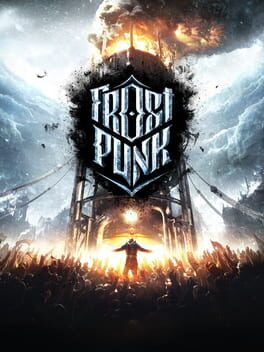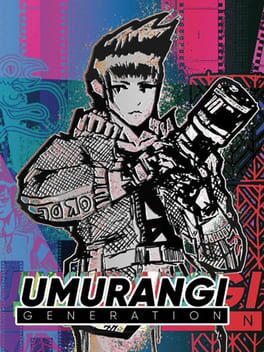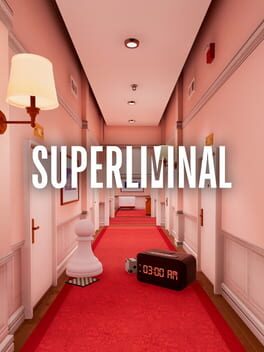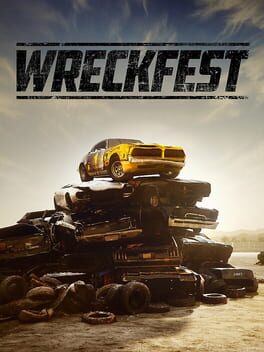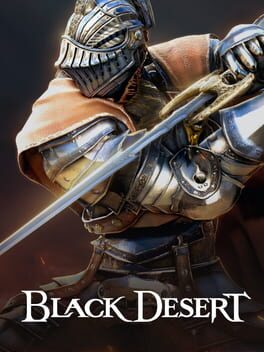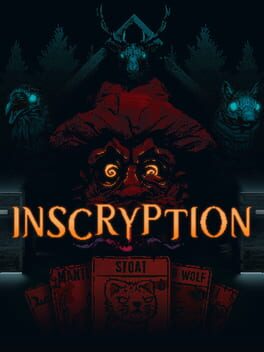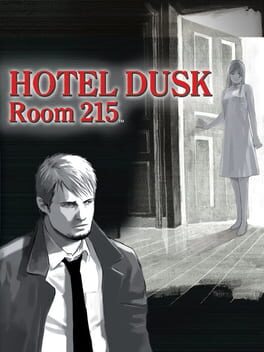theDriu
2018
2020
I really dig the aesthetic but the janky controls and clumsy movement really make this game hard to enjoy. Played the game without the Macro expansion so I was a bit disappointed by the impossibility to tweak your aperture, shutter speed and ISO, as it's a photography game, so to speak. I also found the post-processing options really lackluster. Moreover, the first two levels are absurdly small and can be traversed in their entirety in a matter of seconds. First impression was kind of terrible, so I preferred to refund the game and move on rather than sticking to it and waiting for it to reedem itself.
2014
The Talos Principle, in my opinion, is what a puzzle game should strive to be. I'm not going to talk about how fun it is, or how good the puzzles are. I want this small reflection to deal with its narrative, because the joy of solving puzzles would be short-lived if I didn't see a scope to it all.
Something that's often overlooked in the genre is a compelling narrative with a satisfying closure. See games like The Witness, for example. That game managed to keep me engaged with its ethereal atmosphere, not dissimilar to T.T.P., but that would soon leave me kind of disappointed when I saw that there was nothing to learn about the world I was in, only abstract commentary about thinly linked subjects. What makes T.T.P. different, and more enjoyable for me, is that it manages to create context for its atmosphere and breathe life into the mistery, keeping it fueled thanks to a very careful stream of information from the game world to the player. I really loved the feeling of following a well-trodden path, with all the characters that once solved the very same puzzles leaving messages on walls in the form of QR codes. All of you trying to figure out what the world you booted into means.
All this mistery isn't without a proper pay-off, as the ending spectacularly keeps you both hanging from your lips and gives an epic closure.
...work in progress...
Something that's often overlooked in the genre is a compelling narrative with a satisfying closure. See games like The Witness, for example. That game managed to keep me engaged with its ethereal atmosphere, not dissimilar to T.T.P., but that would soon leave me kind of disappointed when I saw that there was nothing to learn about the world I was in, only abstract commentary about thinly linked subjects. What makes T.T.P. different, and more enjoyable for me, is that it manages to create context for its atmosphere and breathe life into the mistery, keeping it fueled thanks to a very careful stream of information from the game world to the player. I really loved the feeling of following a well-trodden path, with all the characters that once solved the very same puzzles leaving messages on walls in the form of QR codes. All of you trying to figure out what the world you booted into means.
All this mistery isn't without a proper pay-off, as the ending spectacularly keeps you both hanging from your lips and gives an epic closure.
...work in progress...
2023
2019
2018
2014
The game's title is not wrong.
Its strongest and distinctive point is without a doubt the havoc you can wreck with a bus or, on the other hand, the adrenaline of a last-second turn that managed to save your lightweight, nimble vehicle from being totaled. But all of this wouldn't be nearly as thrilling if it weren't supported by a complex destruction model -- second only to BeamNG's -- and a physics engine that can properly determine the outcome of a collision.
(A necessary clarification concerning what I find a good gauge for physics in a videogame is the predictability of the result of an interaction, not how true to life it is.)
There can't be chaos without order to disrupt. Likewise, there wouldn't be any fun in Wreckfest to be had if it were, despite the aforementioned qualities, a bad racing game.
The vehicle handling is slightly more leaning towards a realistic model that is accessible but still fun to master.
Progression in this game, surprisingly, doesn't just boil down to upgrading your ride. As destruction is part of the intended experience, the choice of whether or not to be engaged in such unsportsmanlike behavior becomes a dilemma before the start of every race. Races can be won by either arriving first place or being the last racer standing. To support this duality of speed and strength, the game offers the possibility to armor up to endure crashes and deal more damage to opponents at the expense of your increased vehicle weight and consequent speed loss. In addition, further tuning can be done through simple sliders before each race. Your car's suspensions, differential and braking can be adjusted for crossing certain types of terrain, and transmission can be tweaked to better deal with the track's shape. It's a simple system that adds enough depth to make racing an interesting prospect when corner-bombing your adversaries is promoted.
As far as it concerns maps, there's some variety in track characteristics to warrant experimentation in play style. Arenas -- maps made with demolition derby in mind -- are the most uninteresting by far. Shocking, right? Demolition derbies are probably, after all, the first thing you would associate with vehicles and destruction. Arenas are a straightforward route to experiencing destruction, but they strip you of all options but destruction. Some racetracks are proof that a middle ground for both classes -- speed and strenght -- and hybrids exists. For instance, an 8-shaped track can provide defined opportunities for ramming players in the lead in the intersection in-between the loops. Wreckfest is at its peak when a cat-and-mouse or a head-to-head dynamic ensues in races to the first place.
Its strongest and distinctive point is without a doubt the havoc you can wreck with a bus or, on the other hand, the adrenaline of a last-second turn that managed to save your lightweight, nimble vehicle from being totaled. But all of this wouldn't be nearly as thrilling if it weren't supported by a complex destruction model -- second only to BeamNG's -- and a physics engine that can properly determine the outcome of a collision.
(A necessary clarification concerning what I find a good gauge for physics in a videogame is the predictability of the result of an interaction, not how true to life it is.)
There can't be chaos without order to disrupt. Likewise, there wouldn't be any fun in Wreckfest to be had if it were, despite the aforementioned qualities, a bad racing game.
The vehicle handling is slightly more leaning towards a realistic model that is accessible but still fun to master.
Progression in this game, surprisingly, doesn't just boil down to upgrading your ride. As destruction is part of the intended experience, the choice of whether or not to be engaged in such unsportsmanlike behavior becomes a dilemma before the start of every race. Races can be won by either arriving first place or being the last racer standing. To support this duality of speed and strength, the game offers the possibility to armor up to endure crashes and deal more damage to opponents at the expense of your increased vehicle weight and consequent speed loss. In addition, further tuning can be done through simple sliders before each race. Your car's suspensions, differential and braking can be adjusted for crossing certain types of terrain, and transmission can be tweaked to better deal with the track's shape. It's a simple system that adds enough depth to make racing an interesting prospect when corner-bombing your adversaries is promoted.
As far as it concerns maps, there's some variety in track characteristics to warrant experimentation in play style. Arenas -- maps made with demolition derby in mind -- are the most uninteresting by far. Shocking, right? Demolition derbies are probably, after all, the first thing you would associate with vehicles and destruction. Arenas are a straightforward route to experiencing destruction, but they strip you of all options but destruction. Some racetracks are proof that a middle ground for both classes -- speed and strenght -- and hybrids exists. For instance, an 8-shaped track can provide defined opportunities for ramming players in the lead in the intersection in-between the loops. Wreckfest is at its peak when a cat-and-mouse or a head-to-head dynamic ensues in races to the first place.
2022
In its attempt to tie up a yarn of loose threads, God of War Ragnarok ends up lacking focus and the strong thematic reverberance of the first game.
God of War (2018) was a story that dealt with intimate themes. Every character that Kratos and Atreus crossed paths with always felt like a temporary presence primarily meant only to give a fresh perspective and evolve the father-son dialectic.
God of War Ragnarok, instead, has an ensemble cast of new and returning characters in what I believe is a natural evolution from the first game's more narrow scope. Of every character’s story we expect to see an ending. It makes sense as Ragnarok is the climax and endpoint of Norse mythology, in which every conflict, for the better or for the worse, finds its solution. Considering the ambition of the writing team working on this -- the same people who wrote in the iconic Chaos Blades only halfway through the first game -- it must have been definitely harder to attempt to produce something as cohesive as their previous effort with so many stories to weave into a single one. Narratively, the end result turned out to be worse than the sum of its parts. Parts that never fail to hit the mark, nonetheless, and sometimes are really great.
Moreover, the majority of the acting performances were consistently phenomenal -- I really loved Odin and Thor's. That is to say that there is much to be enjoyed from this game's story, but I can't deny that there is a sour taste of disappointed expectations in my initial words.
Gameplay-wise this brief review would be a different beast. A lot of praise is there to be made, especially on how it managed to add much-required depth and variety to combat, arenas and exploration, all the while greatly reducing some hindrances -- mainly climbing for vertical movement -- that hampered the flow of the game.
God of War (2018) was a story that dealt with intimate themes. Every character that Kratos and Atreus crossed paths with always felt like a temporary presence primarily meant only to give a fresh perspective and evolve the father-son dialectic.
God of War Ragnarok, instead, has an ensemble cast of new and returning characters in what I believe is a natural evolution from the first game's more narrow scope. Of every character’s story we expect to see an ending. It makes sense as Ragnarok is the climax and endpoint of Norse mythology, in which every conflict, for the better or for the worse, finds its solution. Considering the ambition of the writing team working on this -- the same people who wrote in the iconic Chaos Blades only halfway through the first game -- it must have been definitely harder to attempt to produce something as cohesive as their previous effort with so many stories to weave into a single one. Narratively, the end result turned out to be worse than the sum of its parts. Parts that never fail to hit the mark, nonetheless, and sometimes are really great.
Moreover, the majority of the acting performances were consistently phenomenal -- I really loved Odin and Thor's. That is to say that there is much to be enjoyed from this game's story, but I can't deny that there is a sour taste of disappointed expectations in my initial words.
Gameplay-wise this brief review would be a different beast. A lot of praise is there to be made, especially on how it managed to add much-required depth and variety to combat, arenas and exploration, all the while greatly reducing some hindrances -- mainly climbing for vertical movement -- that hampered the flow of the game.
2015
What struck me the most after finishing my first play-through was that I wanted to get back right into a second one. Something I seldom feel the need to do in games, always preferring to move on to the next experience.
The game is a dream of a ride. Hunting down man-beasts in a fashion akin to a hectic dance, in the nightmarish, victorian backdrop of Yharnam's death-infested narrow streets, made this game incredibly fun and cool. I think it's the best diversion from the souls' formula since Dark Souls 1.
To tread the thin line between accommodating the new pace of the game and preserving Dark Souls' DNA some adjustments had to be made. Your characters' moves are nimble and dodging becomes a quick step when locking on a target, instead of a roll. Actions, such as running, attacking, and avoiding attacks, require less of a commitment as the stamina cost is far lower than its predecessors. The cherry on top is the emphasis put on attacking your foe instead of fending off attacks by the means of a shield. To add insult to injury, shields are completely dropped in this entry, apart from a gag shield that exists solely for the reason of mocking more conservative players. On the opposite, damage-dealing weapons received a great upgrade in their move set, with each "Trick Weapon" holding two variants that can be switched to and from effortlessly through yet another type of attack, this game's mother tongue. On the other hand, other reliable sources of damage such as magic spells are not entirely dropped but noticeably understated.
The level-up system carried on from the previous games but stats are less, emphasizing more on your character's basic parameters -- i.e. HP, stamina, and Trick Weapons damage output -- making the experience more streamlined and pioneering Souls' iconic play-style into the action genre.
Let's address the elephant in the room -- parrying -- a previously great source of damage that was stuck on what Bloodborne sought to forsake -- shields. The fine art of parrying was due to be lost if it remained exclusively a shield's function and guns didn't exist. Parrying, firearms, and Bloodborne are a match made in heaven, and probably the game's greatest achievement. They are far more fitting companions than shields for the setting and for the fast pace in which this game operates. And parrying, to remain relevant, had to be associated with such a quick-to-respond tool. Parrying changed and became more integral to the gameplay than it ever had been. From being a high-risk-high-reward means of dealing damage to a reliable gimmick that was quicker and usable at a safer distance. The risk is kind of there, albeit lower. Bosses and lesser enemies alike can and will close the gap between them and you on short notice. The reward is as high as ever. Getting the correct timings is impactful both to the fight and to your sense of accomplishment.
To balance such a mechanic, From Software decided it was best to limit your shots to the number of bullets that you carried, adding a new essential item that had to be found in the game's world. This could have been to the game's detriment, considering that already Dark Souls 1 understood that crucial consumables shouldn't be permanently removed after use. An ingenious solution was found, and so now you could trade some of your health for 5 additional shots. The problem would have been solved if Dark Souls' Estus' system wasn't ditched in favor of one-time health vials. This was, in my opinion, the worst slip-up of the game. Dying from bosses and strolling through the Romantic scenery inevitably becomes slightly dull and frustrating when you need to visit a place to regather your spent resources for the umpteenth time.
Yet another new mechanic exemplifies the aggressive playstyle that this game thoroughly favors. The "rallying" system, namely the one for which when hit you can get a relatively small chunk of your health back by hitting back, is a much welcome addition, even though its effectiveness starts to decline as windows to punish bosses get shorter, and the blows they deal harder. This trend doesn’t extend as much to common enemies, and it can still be used reliably to limit your healing items consumption. Hence why rallying manages to stay relevant and even rise to iconic status.
Bloodborne has a very linear power progression. Like Souls games, you use currency, in the form of your enemies’ “blood echoes”, to level up your character. in this installment, the only thing to keep in mind when building your character is that you want your damage output to be as high as possible in close-quarters combat. There is no tanking to take into account, as it is rarely an option. Especially when armor damage reduction is unimportant and intrinsic armor poise, the quality which decides what attacks can stagger you, has been removed in favor of a system that grants poise to specific attacks. Moreover, not much indecision can take place at the leveling menu, as character defense statistics increase with your level, regardless of what you decide to spend your points in.
The reason why I specified close-quarters combat as your main approach to dealing damage can be discussed. As a premise, I will disregard the handful of spells this game offers, as they’re hardly found in a first playthrough and they’re not something to base your build around. With no exceptions worth of note, your character always carries in his right hand his Trick Weapon and in his left hand his firearm. Both of their damage output can be upgraded, through damage-enhancing gems or by leveling specific statistics; but this weapon setup cannot be changed, meaning you cannot dual wield Trick Weapons or firearms. There is no benefit in deciding to forsake one in favor of the other. Quite the opposite. So, is this weapon setup doomed to asymmetry, depending on which type of damage you decide to upgrade? No, it is not the case, as the firearm’s primary role — parrying — is always fulfilled regardless of statistics, contrary to Trick Weapons, which need levels to deal optimally with the increasing difficulty. If —despite the inefficiency when compared to its counterpart — the safe distance at which guns can be fired is tempting, the limited nature of ammunition might remind you that this is inherently more of a versatile tool than a reliable source of damage. To further put across this idea, non-melee damage doesn't allow rallying, rendering the mechanic absent from ranged builds.
In conclusion, Bloodborne is deep down a close-quarters action game that forsakes the roleplaying aspects of previous titles. It manages to partly compensate for the loss of gameplay variety -- and enticing subsequent play-throughs -- with an arsenal of unique and diverse weapons meant to give greater depth to the combat by allowing new tactics. But I don't think cutting down on solutions to combat encounters was necessary. What I believe is that From Software when creating this game stayed too faithful to the Souls' formula, realizing that roleplaying systems, as they were originally conceived, were incompatible with their new project's core philosophy of combat at breakneck speeds. I don't see it that way, and such systems only needed to be reinvented or substituted to accommodate the aforementioned pace -- like parrying was -- but definitely not dumbed down or removed altogether.
The game is a dream of a ride. Hunting down man-beasts in a fashion akin to a hectic dance, in the nightmarish, victorian backdrop of Yharnam's death-infested narrow streets, made this game incredibly fun and cool. I think it's the best diversion from the souls' formula since Dark Souls 1.
To tread the thin line between accommodating the new pace of the game and preserving Dark Souls' DNA some adjustments had to be made. Your characters' moves are nimble and dodging becomes a quick step when locking on a target, instead of a roll. Actions, such as running, attacking, and avoiding attacks, require less of a commitment as the stamina cost is far lower than its predecessors. The cherry on top is the emphasis put on attacking your foe instead of fending off attacks by the means of a shield. To add insult to injury, shields are completely dropped in this entry, apart from a gag shield that exists solely for the reason of mocking more conservative players. On the opposite, damage-dealing weapons received a great upgrade in their move set, with each "Trick Weapon" holding two variants that can be switched to and from effortlessly through yet another type of attack, this game's mother tongue. On the other hand, other reliable sources of damage such as magic spells are not entirely dropped but noticeably understated.
The level-up system carried on from the previous games but stats are less, emphasizing more on your character's basic parameters -- i.e. HP, stamina, and Trick Weapons damage output -- making the experience more streamlined and pioneering Souls' iconic play-style into the action genre.
Let's address the elephant in the room -- parrying -- a previously great source of damage that was stuck on what Bloodborne sought to forsake -- shields. The fine art of parrying was due to be lost if it remained exclusively a shield's function and guns didn't exist. Parrying, firearms, and Bloodborne are a match made in heaven, and probably the game's greatest achievement. They are far more fitting companions than shields for the setting and for the fast pace in which this game operates. And parrying, to remain relevant, had to be associated with such a quick-to-respond tool. Parrying changed and became more integral to the gameplay than it ever had been. From being a high-risk-high-reward means of dealing damage to a reliable gimmick that was quicker and usable at a safer distance. The risk is kind of there, albeit lower. Bosses and lesser enemies alike can and will close the gap between them and you on short notice. The reward is as high as ever. Getting the correct timings is impactful both to the fight and to your sense of accomplishment.
To balance such a mechanic, From Software decided it was best to limit your shots to the number of bullets that you carried, adding a new essential item that had to be found in the game's world. This could have been to the game's detriment, considering that already Dark Souls 1 understood that crucial consumables shouldn't be permanently removed after use. An ingenious solution was found, and so now you could trade some of your health for 5 additional shots. The problem would have been solved if Dark Souls' Estus' system wasn't ditched in favor of one-time health vials. This was, in my opinion, the worst slip-up of the game. Dying from bosses and strolling through the Romantic scenery inevitably becomes slightly dull and frustrating when you need to visit a place to regather your spent resources for the umpteenth time.
Yet another new mechanic exemplifies the aggressive playstyle that this game thoroughly favors. The "rallying" system, namely the one for which when hit you can get a relatively small chunk of your health back by hitting back, is a much welcome addition, even though its effectiveness starts to decline as windows to punish bosses get shorter, and the blows they deal harder. This trend doesn’t extend as much to common enemies, and it can still be used reliably to limit your healing items consumption. Hence why rallying manages to stay relevant and even rise to iconic status.
Bloodborne has a very linear power progression. Like Souls games, you use currency, in the form of your enemies’ “blood echoes”, to level up your character. in this installment, the only thing to keep in mind when building your character is that you want your damage output to be as high as possible in close-quarters combat. There is no tanking to take into account, as it is rarely an option. Especially when armor damage reduction is unimportant and intrinsic armor poise, the quality which decides what attacks can stagger you, has been removed in favor of a system that grants poise to specific attacks. Moreover, not much indecision can take place at the leveling menu, as character defense statistics increase with your level, regardless of what you decide to spend your points in.
The reason why I specified close-quarters combat as your main approach to dealing damage can be discussed. As a premise, I will disregard the handful of spells this game offers, as they’re hardly found in a first playthrough and they’re not something to base your build around. With no exceptions worth of note, your character always carries in his right hand his Trick Weapon and in his left hand his firearm. Both of their damage output can be upgraded, through damage-enhancing gems or by leveling specific statistics; but this weapon setup cannot be changed, meaning you cannot dual wield Trick Weapons or firearms. There is no benefit in deciding to forsake one in favor of the other. Quite the opposite. So, is this weapon setup doomed to asymmetry, depending on which type of damage you decide to upgrade? No, it is not the case, as the firearm’s primary role — parrying — is always fulfilled regardless of statistics, contrary to Trick Weapons, which need levels to deal optimally with the increasing difficulty. If —despite the inefficiency when compared to its counterpart — the safe distance at which guns can be fired is tempting, the limited nature of ammunition might remind you that this is inherently more of a versatile tool than a reliable source of damage. To further put across this idea, non-melee damage doesn't allow rallying, rendering the mechanic absent from ranged builds.
In conclusion, Bloodborne is deep down a close-quarters action game that forsakes the roleplaying aspects of previous titles. It manages to partly compensate for the loss of gameplay variety -- and enticing subsequent play-throughs -- with an arsenal of unique and diverse weapons meant to give greater depth to the combat by allowing new tactics. But I don't think cutting down on solutions to combat encounters was necessary. What I believe is that From Software when creating this game stayed too faithful to the Souls' formula, realizing that roleplaying systems, as they were originally conceived, were incompatible with their new project's core philosophy of combat at breakneck speeds. I don't see it that way, and such systems only needed to be reinvented or substituted to accommodate the aforementioned pace -- like parrying was -- but definitely not dumbed down or removed altogether.
2015
Black Mesa's Xen is mesmerising.
Half Life atmosphere is at its best when it puts to good use its setting as a means of story-telling. In this regard, the original Xen really wasn't as fleshed out as the rest of the game. Thankfully, Crowbar Collective's efforts in recreating the chapter did justice to the original idea and managed to go even beyond said idea.
That said, I didn't like a few design choices and gameplay tweaks that were made. Namely, some awfully designed open area gunfights, and the recurring physics-based puzzles pulled straight out of Half Life 2.
Moreover, it doesn't retain the same grottesque atmosphere as the original. Albeit preserving the same chromatic dichotomy of dimly lit sterile indoors and colourful sunbathed outdoors, the new character and gun models and detailed scenery really strip the game off of its original uncanniness.
Not that I'm complaining; on the contrary. I love that it is its own thing.
Half Life atmosphere is at its best when it puts to good use its setting as a means of story-telling. In this regard, the original Xen really wasn't as fleshed out as the rest of the game. Thankfully, Crowbar Collective's efforts in recreating the chapter did justice to the original idea and managed to go even beyond said idea.
That said, I didn't like a few design choices and gameplay tweaks that were made. Namely, some awfully designed open area gunfights, and the recurring physics-based puzzles pulled straight out of Half Life 2.
Moreover, it doesn't retain the same grottesque atmosphere as the original. Albeit preserving the same chromatic dichotomy of dimly lit sterile indoors and colourful sunbathed outdoors, the new character and gun models and detailed scenery really strip the game off of its original uncanniness.
Not that I'm complaining; on the contrary. I love that it is its own thing.
2015
2021
This review contains spoilers
Leshy's philosophy for his own card game is quite novel to me. He creates situations that apparently are in his favor, at least to an inexperienced player, for he begins his turn, more often than not, with a few cards already deployed. Truth is that we’re playing a puzzle in disguise more than a match of wits that's supposed to be balanced. The solution to such a puzzle is breaking the game by combining the various tools at your disposal to demolish your opponent in an unforgiving fashion.
Inscryption in the first act is a terribly unbalanced card game, where the scale is at all times tipped, but a breath of fresh air as far as puzzle games are concerned. Its rogue-like features are the cherry on top, as getting how to solve the puzzle becomes this gradual process that never becomes stale: there were never impasses. Each restart in my experience truly felt like I was closer to beating the dealer at its own game, with his own set of rules. And when I did, it was truly rewarding.
The horror atmosphere settles in from the start, all thanks to an immaculate art direction and as much refined sound design. Not only that, but the rogue-like aspects create tense situations, especially in earlier stages of the game.
When I discovered the game wanted to indulge in its narrative I was a bit concerned it would turn out to be kind of mediocre, and, spoilers, it did. This game is often misinterpreted as "meta". Thing is, the only meta thing in the game is giving access to your own computer's files; the rest is, to put it bluntly, a story, witnessed by an unknown onlooker, about a person that came across a self-aware game. The narrative without its meta flair is barebones and belongs to a creepypasta forum.
Sadly, the card game stops being a puzzle game in disguise at the start of the second act, in which it becomes a regular, bloated, unbalanced card game, in which all rogue-like features are dropped. It makes sense from a narrative standpoint, as we finally managed to disrupt Leshy's control over the game, and gone with him was his much-praised game philosophy.
I have to say, while unfortunately that narrative didn't amount to anything special, I truly appreciate a game artist that doesn't only back the winning horse and instead tries to win elegantly by making potentially detrimental choices.
The third act tries to reinvent the first but with a new dealer. That, but the entire point of that third act is to be lifeless and streamlined. This part overstays its welcome and apart from a pair of charming bosses whose gimmicks were quite fun I felt like it was a lesser version of the first game. I don't dislike it, far from it, the art direction is solid and a nice change of pace. What I really appreciate is that each Scrybe has his own idea of what Inscryption is meant to be. When I talk about the Scrybes' game philosophy, for once it isn't some abstract interpretation, but instead their own words. I find them very readable and intriguing characters. For this reason, I would have loved extended versions of the ending games against Grimora and Magnificus, and less of what PO3 was trying to achieve, so that these characters could have been more fleshed out.
In the end, Inscryption makes me happy, because it means that there are game directors that aren't Kojima out there willing to make high-quality, risky, and out-of-the-box games for the sake of artistic expression.
Inscryption in the first act is a terribly unbalanced card game, where the scale is at all times tipped, but a breath of fresh air as far as puzzle games are concerned. Its rogue-like features are the cherry on top, as getting how to solve the puzzle becomes this gradual process that never becomes stale: there were never impasses. Each restart in my experience truly felt like I was closer to beating the dealer at its own game, with his own set of rules. And when I did, it was truly rewarding.
The horror atmosphere settles in from the start, all thanks to an immaculate art direction and as much refined sound design. Not only that, but the rogue-like aspects create tense situations, especially in earlier stages of the game.
When I discovered the game wanted to indulge in its narrative I was a bit concerned it would turn out to be kind of mediocre, and, spoilers, it did. This game is often misinterpreted as "meta". Thing is, the only meta thing in the game is giving access to your own computer's files; the rest is, to put it bluntly, a story, witnessed by an unknown onlooker, about a person that came across a self-aware game. The narrative without its meta flair is barebones and belongs to a creepypasta forum.
Sadly, the card game stops being a puzzle game in disguise at the start of the second act, in which it becomes a regular, bloated, unbalanced card game, in which all rogue-like features are dropped. It makes sense from a narrative standpoint, as we finally managed to disrupt Leshy's control over the game, and gone with him was his much-praised game philosophy.
I have to say, while unfortunately that narrative didn't amount to anything special, I truly appreciate a game artist that doesn't only back the winning horse and instead tries to win elegantly by making potentially detrimental choices.
The third act tries to reinvent the first but with a new dealer. That, but the entire point of that third act is to be lifeless and streamlined. This part overstays its welcome and apart from a pair of charming bosses whose gimmicks were quite fun I felt like it was a lesser version of the first game. I don't dislike it, far from it, the art direction is solid and a nice change of pace. What I really appreciate is that each Scrybe has his own idea of what Inscryption is meant to be. When I talk about the Scrybes' game philosophy, for once it isn't some abstract interpretation, but instead their own words. I find them very readable and intriguing characters. For this reason, I would have loved extended versions of the ending games against Grimora and Magnificus, and less of what PO3 was trying to achieve, so that these characters could have been more fleshed out.
In the end, Inscryption makes me happy, because it means that there are game directors that aren't Kojima out there willing to make high-quality, risky, and out-of-the-box games for the sake of artistic expression.
2007
